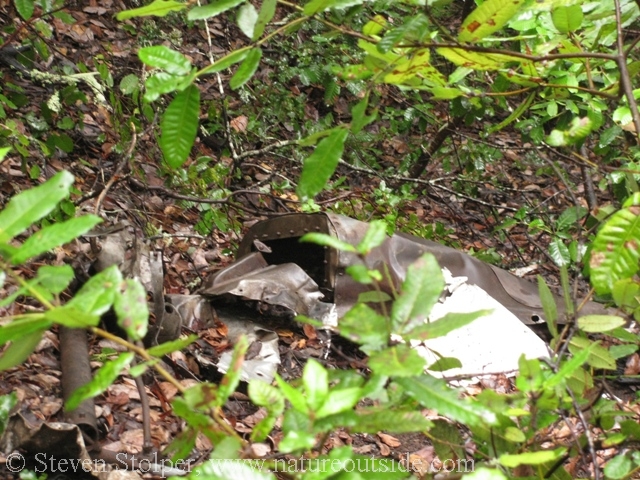Hi Everyone!
We often hike to waterfalls, mountain tops, and beautiful views. But some of the most rewarding hikes involve the rediscovery of local history. The mountains where I reside are dotted with long abandoned shingle mills, logging camps, and farmsteads from the 1800's and early 1900's. Each tells a story. There is something timeless and awe inspiring about visiting a ruin and imagining what it is like to live in that time.
For the second time, I hiked to the crash site of Resolution. British Commonwealth Pacific Airlines Flight 304 departed Honolulu bound for San Francisco in October 28, 1953. And as the DC-6 climbed into the night it immediately encountered problems.
The rest, as they say, is history...

The picture above is a shot of the ill-fated airliner. Here are two pictures from my hike:


As I researched the crash, I became more and more fascinated by the story. Background information about the crash and more pictures can be found here.
Has anyone done some "historical hiking" lately? I would guess that it is almost unavoidable in a place with as much history as the UK. I read Harvestman's thread about "industrial history" with great interest (http://www.bushcraftuk.com/forum/showthread.php?t=127865).
Regards,
- Woodsorrel
We often hike to waterfalls, mountain tops, and beautiful views. But some of the most rewarding hikes involve the rediscovery of local history. The mountains where I reside are dotted with long abandoned shingle mills, logging camps, and farmsteads from the 1800's and early 1900's. Each tells a story. There is something timeless and awe inspiring about visiting a ruin and imagining what it is like to live in that time.
For the second time, I hiked to the crash site of Resolution. British Commonwealth Pacific Airlines Flight 304 departed Honolulu bound for San Francisco in October 28, 1953. And as the DC-6 climbed into the night it immediately encountered problems.
The rest, as they say, is history...

The picture above is a shot of the ill-fated airliner. Here are two pictures from my hike:


As I researched the crash, I became more and more fascinated by the story. Background information about the crash and more pictures can be found here.
Has anyone done some "historical hiking" lately? I would guess that it is almost unavoidable in a place with as much history as the UK. I read Harvestman's thread about "industrial history" with great interest (http://www.bushcraftuk.com/forum/showthread.php?t=127865).
Regards,
- Woodsorrel


